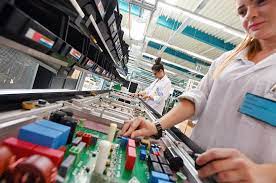Components like microchips, resistors, capacitors, pcb assemblers and connectors are soldered onto the PCB. This assembly process demands the utmost precision, as even a tiny error can render the entire PCB useless. Automated machinery, as well as skilled human operators, are employed to ensure the components are placed accurately and soldered securely.
The quality control stage follows assembly, where each PCB undergoes rigorous testing to identify and rectify any defects. This meticulous quality assurance process guarantees the reliability and performance of the final product. It’s also a testament to the importance of PCBs in critical applications such as medical devices and aerospace technology, where the consequences of failure can be dire.
The versatility of PCB fabrication allows for customized designs to meet specific requirements. Whether it’s a compact and efficient PCB for a smartphone or a robust and resilient PCB for industrial machinery, the process can be tailored to suit the intended application.
In the world of PCB fabrication, innovation is the name of the game. Advancements in technology continually push the boundaries of what’s possible, enabling smaller, faster, and more efficient PCBs. The development of flexible and rigid-flex PCBs has opened up new opportunities for wearables and other compact devices, while advancements in materials and manufacturing techniques have improved PCB reliability and performance.

